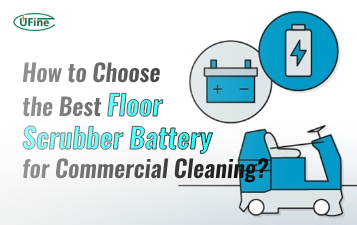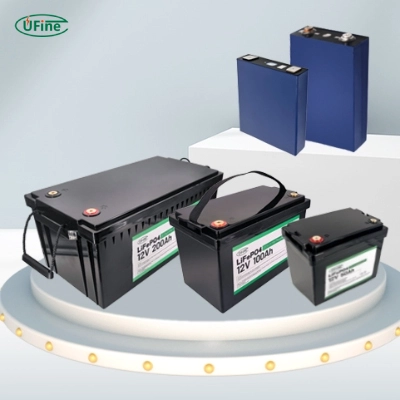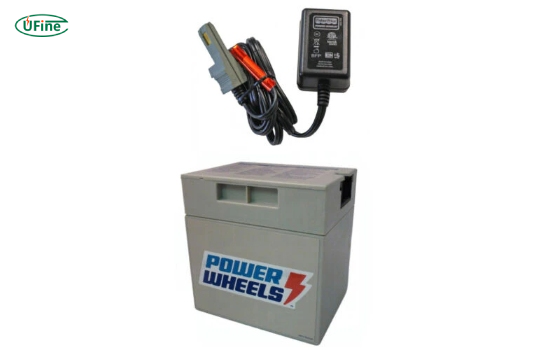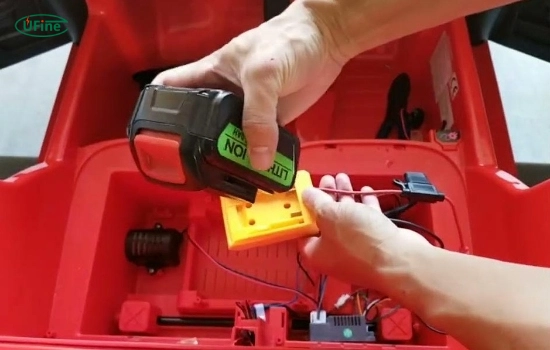Power Wheels Battery is the heart of the beloved electric ride-on toys that provide children a thrilling experience of independence and adventure. Understanding the intricacies of these batteries is crucial for parents who want to ensure their child’s toy performs optimally and lasts for years. This comprehensive guide will explore everything you need about Power Wheels batteries, including types, maintenance tips, troubleshooting common issues, and more.
Part 1. What is a power wheels battery?
A Power Wheels battery is a rechargeable power source designed explicitly for electric ride-on toys. These batteries provide the necessary energy to run the vehicle’s motor, lights, and other components. Most Power Wheels toys use either 6-volt, 12-volt, or 24-volt lead-acid batteries, which are reliable and cost-effective. Lithium-ion batteries have gained popularity recently due to their lighter weight, faster charging times, and extended lifespan. Common lithium-ion battery chemistries include lithium iron phosphate (LiFePO4) and lithium nickel manganese cobalt oxide (NMC). The typical voltage configurations for lithium-ion batteries used in Power Wheels are 12V, 18V, and 24V, offering higher energy density and more consistent power delivery.
Key Features of Power Wheels Batteries
- Voltage Options: Lead-acid is available in 6V, 12V, and 24V configurations, and lithium-ion is available in 12V, 18V, and 24V configurations.
- Lead-Acid Technology: Power Wheels batteries often use Sealed Lead Acid (SLA) or Valve Regulated Lead Acid (VRLA) technology, which is safe and efficient for children’s toys.
- Lithium-Ion Batteries: Typically use LiFePO4 or NMC chemistries, available in 12V, 18V, and 24V, offering advantages like reduced weight, longer run times, faster charging, and better energy density.
- Rechargeable: Designed for multiple charging cycles, making them economical for long-term use.
Part 2. Types of power wheels batteries
Power Wheels vehicles generally run on one of the following types of batteries:
- 6-Volt Batteries: Common in smaller or entry-level models, these are lightweight and ideal for younger children.
- 12-Volt Batteries: In mid-size models, these batteries provide more power and speed, perfect for older kids.
- 24-Volt Batteries: Used in higher-end models, they deliver maximum power and speed for a more thrilling ride.
- Lithium-Ion Batteries: They are increasingly being used due to their advanced technology. Typical chemistries include LiFePO4 and NMC, with 12V, 18V, and 24V voltage options. These batteries offer better energy efficiency, faster charging, and longevity than lead-acid.
Comparison Table of Battery Types
| Feature | 6-Volt Battery | 12-Volt Battery | 24-Volt Battery | Lithium-Ion Battery (LiFePO4 or NMC) |
|---|---|---|---|---|
| Ideal Age Range | 2-5 years | 5+ years | 8+ years | Varies by model |
| Maximum Speed | Up to 3 mph | Up to 5 mph | Up to 8 mph | Varies by model |
| Weight | Light (about 4 lbs) | Medium (about 8 lbs) | Heavy (about 12 lbs) | Lightest option |
| Run Time | ~1 hour | ~2 hours | ~3 hours | Longer than lead-acid batteries |
| Voltage Options | 6V | 12V | 24V | 12V, 18V, 24V |
Part 3. Why are lithium-ion batteries more popular in power wheels?
Lithium-ion batteries have gained popularity in Power Wheels for several compelling reasons:
- Lighter Weight: Lithium-ion batteries are significantly lighter than traditional lead-acid batteries. This weight reduction enhances the vehicle’s overall performance by improving speed and maneuverability.
- Longer Lifespan: These batteries typically last longer than their lead-acid counterparts. While lead-acid batteries may last between one and three years, lithium-ion batteries can last up to five years with proper care.
- Faster Charging: Lithium-ion batteries can be used more quickly than lead-acid batteries. This feature allows kids to get back on the road sooner after playtime.
- Consistent Power Output: Lithium-ion batteries maintain a consistent voltage throughout use, unlike lead-acid batteries that lose voltage as they discharge. This stability ensures optimal performance during operation.
- Reduced Maintenance: Lithium-ion batteries require less maintenance compared to lead-acid types. They do not need regular topping off with water or special handling procedures for charging.
- Environmental Impact: Lithium-ion technology is generally considered more environmentally friendly than lead-acid technology due to lower emissions during production and disposal.
Part 4. How to choose the right battery for your power wheels?
Choosing the correct battery for your child’s Power Wheels is crucial for ensuring safety and performance. Here are some factors to consider:
Age of Your Child
Your child’s age will largely determine the type of battery you need. Younger children typically require less powerful vehicles, while older kids may enjoy faster models that require a more robust battery.
Vehicle Model
Different Power Wheels models may have specific battery requirements. Always refer to the manufacturer’s guidelines to ensure compatibility.
Usage Frequency
Investing in a higher-capacity battery may be beneficial if your child uses their Power Wheels frequently. This ensures longer run times and less frequent charging.
Part 5. How to maintain your power wheels battery?
Proper maintenance can significantly extend the life of your Power Wheels battery. Here are some essential tips:
Regular Charging
Always charge the battery after each use, even if it seems partially charged. This practice helps maintain the battery’s health.
Avoid Overcharging
While keeping the battery charged is essential, overcharging can damage it. Use a smart charger that automatically stops charging when the battery is full.
Store Properly
Store the battery in a cool, dry place when not in use. Extreme temperatures can affect performance and lifespan.
Part 6. Troubleshooting common power wheels battery issues
You may encounter issues with your Power Wheels battery even with proper care. Here are common problems and solutions:
Battery Won’t Charge?
Check the charger for damage or loose connections if your battery isn’t charging. It may be time for a replacement if everything looks OK, but it won’t charge.
Short Run Time?
If you notice that your child’s ride-on toy runs out of power quickly, it could be due to an old or damaged battery. Consider testing with a multimeter or replacing it if necessary.
Vehicle Not Moving?
If the vehicle doesn’t move despite having a charged battery, inspect the connections between the battery and motor for any loose wires or corrosion.
Part 7. Signs that your power wheels battery needs replacement
Recognizing when it’s time to replace your child’s Power Wheels battery can save you from unexpected disappointments during playtime:
- Decreased Run Time: If you notice that the vehicle runs for significantly shorter periods than before.
- Charging Issues: Difficulty in charging or inability to hold a charge can indicate wear.
- Physical Damage: Any signs of swelling or leakage from the battery casing should prompt immediate replacement.
Part 8. Best practices for extending your power wheels battery life
To maximize the lifespan of your child’s ride-on toy’s battery:
- Follow Charging Guidelines: Adhere strictly to charging instructions provided by the manufacturer.
- Limit Heavy Loads: Avoid overloading the vehicle beyond its weight limit, as this can strain the motor and drain the battery faster.
- Regular Maintenance Checks: Periodically inspect connections and terminals for corrosion or wear.
Part 9. FAQs
-
What type of charger do I need for my Power Wheels battery?
It would help to have a charger specifically designed for the 6V, 1,2, or 24V lead-acid or lithium-ion battery used in Power Wheels. Always check compatibility before purchasing. -
How long does it take to charge a Power Wheels battery?
Typically, it takes about 12 hours to charge a depleted lead-acid Power Wheels battery fully; however, lithium-ion batteries usually require less time—around four hours—for a full charge. -
Can I use any other type of battery in my Power Wheels?
No, using other types of batteries can damage your vehicle and pose safety risks. Always stick with the recommended lead-acid or lithium-ion batteries compatible with your model. -
How often should I replace my Power Wheels battery?
Most lead-acid batteries last about one to three years, while lithium-ion batteries can last up to five years, depending on usage and maintenance practices. Regularly check performance and replace as necessary. -
Is it safe to leave my Power Wheels plugged in overnight?
Yes, as long as you use an appropriate charger that prevents overcharging. However, constantly monitor charging sessions periodically.
Related Tags:
More Articles

How to Choose the Best Floor Scrubber Battery for Commercial Cleaning?
Selecting the ideal floor scrubber battery ensures a long runtime, rapid charging, and minimal maintenance for efficient commercial cleaning operations.
Battery for Blower vs Battery for Leaf Vacuum: Which One Should You Choose?
Battery for blower vs leaf vacuum—learn the key differences in power, fit, and runtime to choose the right battery for your outdoor tool needs.
How to Choose the Right Battery for Blower?
Choosing the right blower battery? Consider voltage, capacity, chemistry & usage. This guide helps match the best battery for peak performance.
How to Choose the Best Insulated Battery Box for Lithium Batteries?
Choosing the Best Insulated Battery Box for Lithium Batteries? Discover key factors such as size, material, and safety for optimal protection and performance.
7 Critical Elements on a Lithium Battery Shipping Label
What must be on a lithium battery shipping label? Learn 7 key elements to ensure safety, legal compliance, and correct handling across all transport modes.






